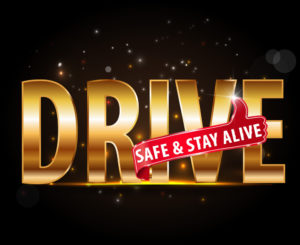
Actually “SIPDE” is not a word at all; however it is a very powerful defensive driving acronym! Read below to understand why.
The reason some drivers remain safe on our nation’s highways and others become a collision statistic is the fact that the defensive drivers use five very important defensive driving strategies. These five strategies make up The SIPDE system of driving.
What is SIPDE?
SIPDE is a very powerful defensive driving technique that should be implemented into everyone’s everyday driving. Each letter of the acronym SIPDE stands for a very important component of this life saving strategy.
S– SEARCH The distance down the road you look is an extremely important principle of defensive driving. Not only does looking down the road keep your vehicle on a straight line path, it enables to you to see any problems or obstacles that you may encounter ahead of you. For speeds of 45 mph or less your eyes should be looking approximately 12 seconds or more down the road. For speeds over 45 mph you need at least 20 seconds of visual lead time. To calculate this lead time, simply pick the farthest point down the road you can see and begin to count one thousand one, one thousand two…… When you hit that magic number of 12 or 20 based on your speed, you have hit your target visual lead time. You only need to do this once to figure out where your optimal visual lead time lies.
I– Part two of the SIPDE strategy involves Identifying obstacles and problems that you may encounter in your path should you continue to maintain your current driving speed.
P– The next step is to Predict what could happen if you continue at your current speed and something dangerous occurs in front of you.
D– Once you have made the prediction that you could potentially be facing a very serious problem ahead of you, it is time to Decide on a defensive driving action to help you avoid a collision. Remember, you maintain three important controls over your vehicle at all times, Steering, Braking and Acceleration.
E– Finally you must Execute one of those three controls to help you avoid the obstacle or problem. Usually slowing down or changing lanes will hep you to avoid a collision. Sometimes however; extreme braking in combination with steering is needed to avoid an accident. Acceleration sometimes may even be the strategy of choice if a truck or car behind you has lost their brakes!
This whole 5 step strategy takes less than one second to execute. Early recognition of a problem is the key. Establishing a visual lead time becomes paramount to effective defensive driving. It is also extremely important to remain calm before deciding on the appropriate defensive driving response.
Following Distance
Understand that the proper use of your visual skills are very important in the proper execution of the SIPDE system, however; maintaining a proper following distance behind the vehicle ahead of you is equally as important. Understanding following distance and how to adopt it into your defensive driving strategy is actually pretty simple. When the vehicle in front of you passes a fixed object or line on the road, start counting one thousand one, one thousand two and then you should pass the object or line. A following distance of two seconds or more is ideal for speeds of 45 mph or less. When travelling at freeway speeds, more than 45 mph, 4 seconds or more is an appropriate following distance.
Once you determine what that distance is, this space should travel with you at all times. It takes approximately 260 feet to totally stop a car at 60 mph. That is why this space cushion is so critical to defensive driving. A proper following distance allows you to comfortably take your eyes off the road for a split second without the fear of running into the car ahead of you. It also allows you clear time and space to avoid any problems in your immediate driving path.
Implementing SIPDE into Your Driving
To implement the SIPDE defensive driving system you need to follow the following steps:
- Determine your visual lead time for high and low speed driving environments.
- Determine your following distance for high and low speed driving environments.
- “Assume the worst” when predicting problems ahead of your driving path.
- Be an “anti-social” driver. Keep space around your vehicle and do your best to stay away from other vehicles. Less can go wrong when no one is around you.
- Decide on an escape route should something go wrong around or in front of you.
- Execute one of the the three controls of your car early to avoid a collision or problem.
- Finally, Remain calm at all times! Panic is the worst thing that can happen when confronted with a traffic emergency.
Want more important defensive driving strategies and techniques? My two defensive driving books are now available on Amazon Kindle!
“Save Your Teenage Driver’s Life”
“Teach your Teenager How to Drive a Car”
Need a NYS Defensive Driving Course to save on insurance. We have one online, click below to get the information. Type in coupon code safedriver to save $10.00!
